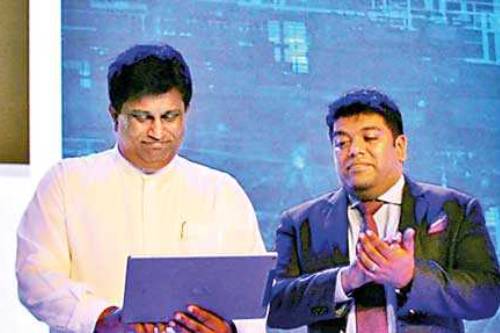A draft policy framework to promote artificial intelligence (AI) in Sri Lanka was unveiled yesterday by the Sri Lanka Association of Software and Services Companies (SLASSCOM). AI, a market which is expected to exceed more than $ 191 billion by 2024, will be introduced as a new pillar on top of the two predominantly-relied pillars which steered the IT/BPM sector’s growth over the last few years – software development and finance and accounting outsourcing (FAO).
The knowledge and innovation chamber of the country will use this draft to drive, debate and discuss the opportunities and challenges of the technology to have a robust AI policy framework within the next three to six months. Speaking at the event, SLASSCOM Chairman Jeevan Gnanam said that Sri Lanka has the opportunity to “draw upon a blank canvas” with the right use of AI as the fourth industrial revolution, coupled with the increasing pace of emerging technologies, is opening up new opportunities for the country to be a driver of AI and data science in South Asia.
“We have an opportunity in the next few years to enable a vision where Sri Lanka is a model nation where AI policy has a positive impact on citizens and businesses. The goal is to apply AI to issues in different economic and social sectors that can make a real difference to the wellbeing of Sri Lankan citizens, ranging from education to healthcare, government to agriculture, skills development to policymaking. Once successful, Sri Lanka should strive to replicate these solutions as exports in other similarly placed developing countries.”
“That is why we are quite confident in saying that the many opportunities existing right now can be drawn and mapped perfectly across a blank canvass which is enabled by the fourth industrial revolution, big data and the growth in smart, connected devices. As a nation, we have the perfect opportunity to lay the solid foundation within the next three to five years to be an important thought leader in the South Asian context,” Gnanam opined at the launch of the policy framework draft.
The draft titled ‘AI Policy Framework Draft for Sri Lanka’ sets the stage for Sri Lanka as a nation to embrace AI and create the strategy for the country to seize the opportunity inherent in being an AI-driven nation while creating jobs and improving economic growth and prosperity for all citizens.
The proposed AI strategy will try to address the current shortfalls of in the ecosystem such as lesser numbers of data science graduates, low amounts of research being conducted, lack of implementation, lack of skill availability, low awareness, absence of special data laws that protect from personal information theft and lack of data sets to solve problems.
The strategy encompasses seven high level objectives which are increasing awareness and adaptation of AI in both public and private sector, introducing regulations for a level playing field for AI, Equipping society and people for the AI nation, Showcasing AI’s capabilities for the greater good, incentivising fundamental and applied research in AI, identifying niche opportunities and attracting leading global technology and AI companies to set up in Sri Lanka.
The draft also proposes a setting up of a Centre of Excellence for Artificial Intelligence either as a public-private partnership or as an independent body. A discussion amongst the main stakeholders from the public and private sector will be arranged to best showcase the way forward; the document notes down.
“A big part of the program is to discuss what the implementing body would be. In the policy document draft, we have outlined something called AISL – Artificial Intelligence Sri Lanka. The question is, do we completely trust the Government on what they are doing and form a Ministry of AI or do we keep it completely under the private sector? Or else, do we agree that it should be something in between? Perhaps a PPP or an independent think-tank.”
“This process of discussion and debate will be organised and incubated by the AI Forum within SLASSCOM in the next three to six months to ensure complete transparency as well as the implementation of the strategy and road map. The long-term view is to create an entity that is self-sustaining within three years with its executive team and has a balanced view of both the public and private sector,” Gnanam said further.
(FT)

